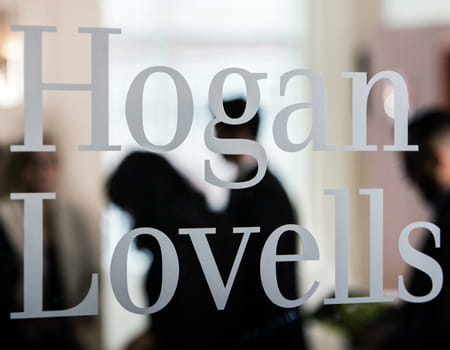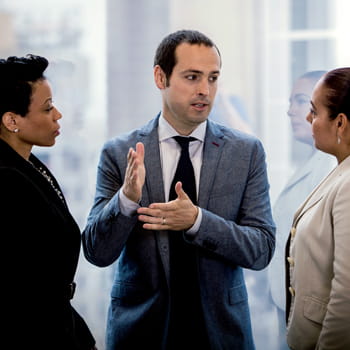
Trump Administration Executive Order (EO) Tracker
Hogan Lovells became a top 10 global legal services provider on 1 May 2010 through an unprecedented combination of two firms with international credentials, U.S.-based firm Hogan & Hartson and European-based firm Lovells. Modern-day Hogan Lovells carries on the tradition of excellence established by our founders and further builds on their legacy.
Frank J. Hogan opened his law practice in Washington, D.C. in 1904, quickly earning fame as America's leading trial lawyer as a result of a string of successes in high-profile, politically charged cases. In 1924 Hogan represented oil magnate Edward L. Doheny who had been indicted in the "Teapot Dome" scandal on charges of bribery and conspiracy to defraud the United States. Doheny was acquitted, while Secretary of the Interior Albert Fall was found guilty of accepting the bribe. Such cases earned Hogan a national reputation as the most famous trial lawyer in the country and attracted Nelson T. Hartson, former solicitor of internal revenue, to the firm in 1925 to establish a business practice to complement the firm's established trial practice. Continued growth and success led to the 1938 partnership between Hogan and Hartson.
Throughout the next half-century, the firm continued to expand and distinguish itself in numerous areas. As the activities of the federal government expanded, the number and scope of Hogan & Hartson's practice areas also grew. While litigation (both trial and appellate), taxation, health, and communications remained major focuses of the firm's practice, many other areas were also added over the years, including all significant aspects of corporate, regulatory, intellectual property, and legislative.
In the 1970s, Hogan & Hartson became the first major law firm in the United States to establish a separate practice group devoted exclusively to providing pro bono legal services.
The beginning of a major evolutionary shift for Hogan & Hartson came in 1984 with the opening of the firm's first office outside of the district. The rest, as they say, is history. By April 2010, the firm had 26 offices in 12 countries on four continents.


Lovells owed its existence to a number of legal businesses established in the UK and Continental Europe in the 19th and 20th Centuries, principal among which was Lovell, White & King, founded in London by John Spencer Lovell in 1899. He was joined as a partner by Reginald White, a fellow articled clerk in his previous firm, in 1902 and by Charles King in 1925. The firm’s first office was on Snow Hill, a short walk from Hogan Lovells’ current London headquarters on Holborn Viaduct. In the mid-20th Century the firm moved successively to Thavies Inn on Holborn Circus and later to Serjeants’ Inn in Fleet Street, before returning to Holborn Viaduct in 1977.
The firm soon established a reputation for a wide range of corporate, commercial and contentious work, in particular for leading US corporations such as Ford and Woolworths whose operations began to branch into the UK and Europe during the early years of the firm’s growth.
In 1966 Lovell, White & King merged with Haslewoods, a small firm with adjacent offices in Serjeants’ Inn which traced its pedigree to William Haslewood, the trusted adviser and executor of Admiral Lord Nelson in the early 19th Century.
More significantly, in 1988 Lovell, White & King merged with Durrant Piesse to create Lovell White Durrant. Durrant Piesse was known in particular for its finance practice, which complemented Lovell, White & King’s broadly-based international commercial practice. Durrant Piesse had itself been formed by the merger in 1973 of two long-established City firms, Durrant Cooper & Hambling, which had been founded in 1893 and had Barclays Bank as its major client; and Piesse & Sons, which had been founded in 1859 and had Exxon as its most important client. In 1985 Durrant Piesse was joined by another small but long-established firm, Faithful Owen & Fraser, specialists in intellectual property law.
Lovell, White & King established its first international offices in Brussels and New York in 1972 and 1977 respectively. Subsequently it and Lovell White Durrant opened a steady stream of offices in Europe, the US and Asia during the 1980s and 1990s. Lovells was formed in 2000 when Lovell White Durrant merged with a leading German firm, Boesebeck Droste. That firm was itself the product of mergers involving several firms founded in different regions of Germany, the earliest of which was established in Hamburg in 1884.
Lovells continued to expand throughout the 2000s with further office openings in Europe and Asia as well as two further significant mergers: with Dutch firm Ekelmans den Hollander in 2000 and French firm Siméon & Associés in 2001.
